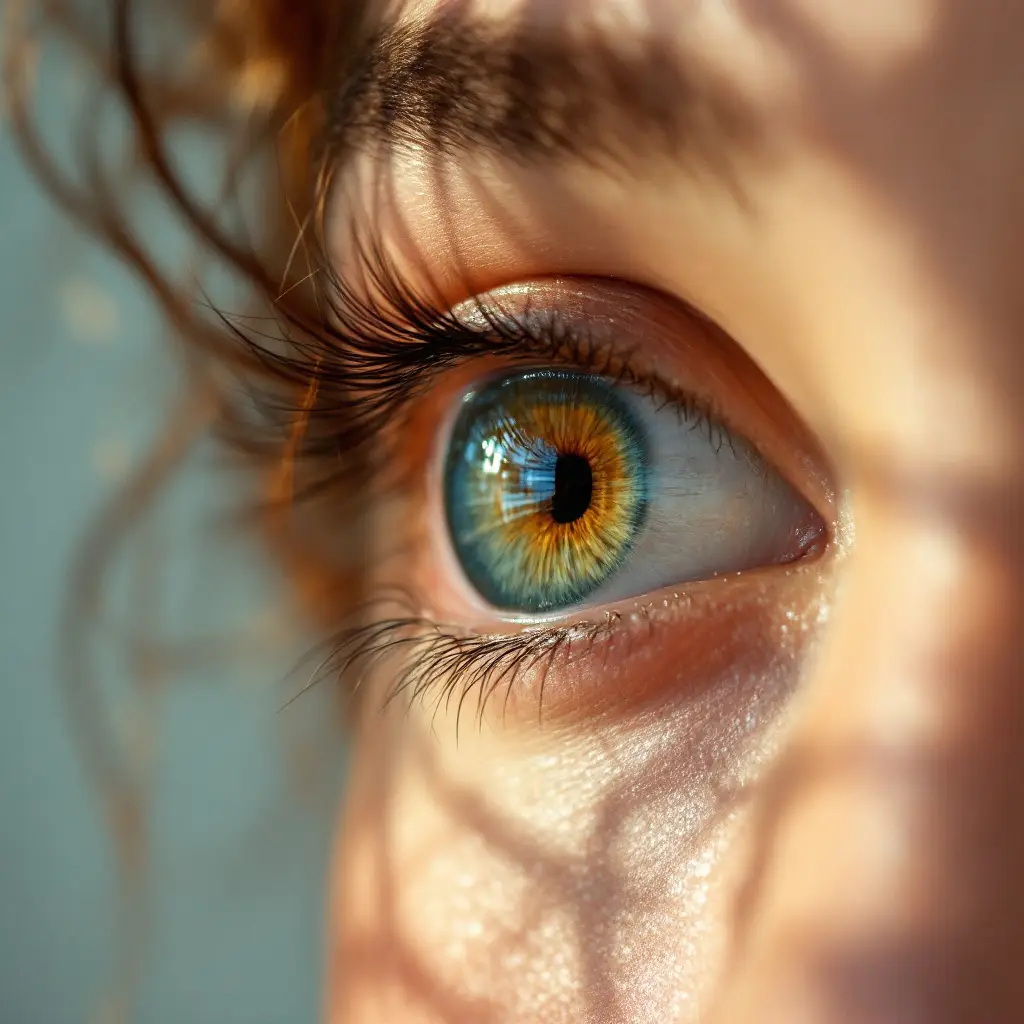Cataract surgery is a procedure that aims to improve vision by removing the clouded lens and replacing it with an artificial lens. After surgery, many wonder how the procedure will affect their ability to drive and whether there is a need to wait before returning to driving safely. There are several important aspects to consider when planning to get back on the road after cataract surgery, including side effects, recovery time, effects on vision, and what guidelines to follow to ensure safe and comfortable driving. In this article we will explain everything you need to know about driving after cataract surgery and how to prepare properly.
Is it allowed to drive immediately after cataract surgery ?
After cataract surgery, it is generally not recommended to drive immediately, and the reason for this is that the field of vision and visual acuity can be affected in the first days after surgery. It is important to give the eye enough time to heal and adapt to the new lens to avoid possible risks while driving. It is recommended to plan in advance assistance with transportation home after surgery and to follow the doctor’s instructions regarding the recommended waiting time before returning to driving.
When can you return to driving after cataract surgery ?
Returning to driving after cataract surgery depends mainly on the recovery of the eye and the quality of vision. Most patients need a period of several days to weeks to feel comfortable driving again. The doctors recommend to avoid driving at least for the first few days after the surgery until the vision stabilizes and there are no more effects of anesthetic drugs or drops. It is very important to be examined by the attending physician and get his approval before returning to driving. The vision tests are essential to make sure that the eye responds well to changes and that the visual field and visual acuity are normal.
Driving at night after cataract surgery – is it safe ?
Driving at night after cataract surgery can be challenging for some patients, especially in the first few weeks after the procedure. Patients often complain about problems such as glare from the headlights of other vehicles or seeing halos around lights, phenomena that can make driving at night difficult. It is important to consider avoiding driving after dark until the vision is completely stabilized and the patient feels comfortable dealing with the lights on the road. If there is difficulty with night vision, it is recommended to consult the attending physician and consider additional precautions or wait until the vision improves.
What factors affect the waiting time for driving after cataract surgery ?
The waiting time for driving after cataract surgery varies from patient to patient and depends on several key factors. First, the type of surgery may have an effect – some patients undergo surgery on both eyes, which requires a longer recovery period. In addition, the degree of the individual reaction of the eye to the procedure and the degree of improvement in visual acuity also affect the ability to return to driving. Other factors include the patient’s age, general health status, and whether there are underlying diseases such as diabetes or high blood pressure that may affect the rate of recovery. Sometimes, side effects such as dry eyes or a feeling of discomfort may extend the waiting time until safe driving. That is why it is important to listen to the recommendations of the attending physician and take into account the personal situation.
side effects that may affect
After cataract surgery, several side effects may appear that may affect the ability to drive safely. Common phenomena include glare and halos around light sources, especially at night, which can make it difficult to identify obstacles on the road. It is also possible that the patient will feel dry eyes, which can cause discomfort while driving and reduce concentration. A general feeling of discomfort in the eyes, blurred vision or changes in visual acuity may also be a difficulty. It is important to be aware of these symptoms and wait until they disappear before returning to driving. In case the side effects persist, it is recommended to consult the attending physician and consider solutions such as eye drops to improve comfort.

How to ensure safe driving
Safe driving after cataract surgery requires close attention to the doctor’s instructions and full recovery of vision. It is recommended to wait until the doctor approves a return to driving and make sure to have an eye test before returning to the road. Using glasses with an anti-glare coating or sunglasses while driving during the day may help reduce the sensation of glare. It is important to start with short trips, to avoid driving during the hours of darkness at first, and to drive in lighting situations where there is clear visibility. Any change in the sensation of vision, such as glare, halos, or blurring, should be considered, and driving should be avoided if these sensations appear.
Practice and initial steps
Returning to driving after cataract surgery can feel different, so it is recommended to start driving in quiet areas and practice in places where there is less traffic and distractions. At the beginning, you should drive short distances and choose hours when the lighting is natural and good. This will help the patient get used to the new sense of vision and detect any difficulty or discomfort while driving. In addition, you can use an accompanying driver who will help if necessary, and check whether the vision is suitable for driving fully and safely.
Guidelines for safe driving after surgery
To ensure safe driving after cataract surgery, several important guidelines must be followed. First, it is recommended to start with short and easy trips and avoid long trips until the vision is completely stabilized. Using dark glasses or sunglasses during the day can help prevent glare and ease the sensation in the eyes. Driving during the day should be preferred and driving at night should be avoided if there are phenomena such as glare or halos around lights. It is important to check with the treating doctor the need for suitable lenses or glasses, and if there is a persistent difficulty in vision, the doctor should be informed in order to adjust additional solutions.
When should you avoid driving ?
There are cases in which it is recommended to completely avoid driving after cataract surgery to ensure the safety of the patient and his environment. If there is a feeling of blurred vision, increased glare, or halos around lights, it is important to wait until the situation improves before returning to the road. If the patient feels discomfort, pain or a feeling of pressure in the eye after the operation, it is recommended not to drive and wait until these feelings disappear. In addition, if the doctor detects vision problems during a follow-up examination after surgery, you must obey his instructions and refrain from driving until medical clearance is obtained.
Vision test before returning to driving after cataract surgery
Before returning to driving after cataract surgery, it is important to have a comprehensive vision examination by an ophthalmologist. The test makes it possible to verify that the vision is indeed sharp enough and enables safe driving. This process includes testing the visual acuity, depth vision and ability to recognize colors, as well as testing the eye’s reaction to light and changing lighting conditions. This test is especially important for patients who have experienced phenomena such as glare or auras after surgery, because these phenomena may affect safety while driving. Only after the doctor verifies that the vision is stable and suitable for driving, it is recommended to safely return to the road.

The effect on insurance
After cataract surgery, there may be an impact on the driver’s insurance policy, especially if there are side effects that affect the ability to drive. It is important to inform the insurance company in case there are significant vision changes, as failure to report this may lead to a violation of the insurance conditions in the event of an accident. In some cases, the insurance company may request a medical certificate confirming that the driver is fit to drive after the surgery. Therefore, it is recommended to check the details of the policy and make sure that the insurance coverage is valid in your new situation and to consult with the attending physician regarding the ability to drive in order to maintain complete security.
Recommended rest periods before returning to driving after cataract surgery
The recommended length of rest before returning to driving after cataract surgery depends on each patient’s rate of recovery. In most cases, doctors recommend a rest period of at least a few days after surgery to allow the eye to adjust to changes in vision. If the operation was performed on only one eye, it is important to give it time to heal before you burden it with the effort of driving. A longer rest period may be required if there are side effects such as glare or blurred vision. The general recommendation is to wait until the doctor approves a return to driving, and sometimes even several weeks, until the vision is stable and safe.
Is driving safe after cataract surgery in only one eye ?
Returning to driving after cataract surgery in only one eye can be challenging, as the other eye still affects the overall quality of vision. If the other eye is in good condition and the vision is sharp, you may be able to return to driving more quickly. At the same time, many patients experience temporary changes in depth perception and visual field when only one eye has undergone surgery. Therefore, it is recommended to make short trips in optimal lighting conditions and to avoid driving at night or in difficult conditions until the vision is completely stabilized.





